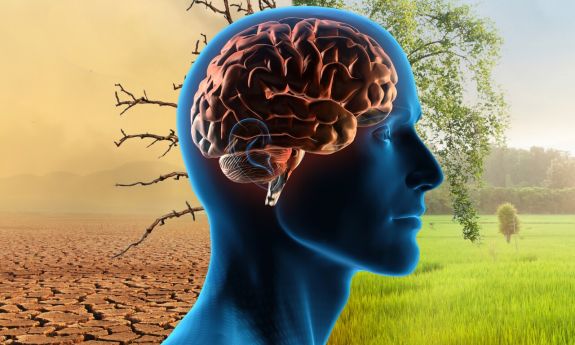Climate Change & the Brain
Changes in the environment due to climate-related events are impacting how the brain develops

This is the first story in a series featuring Duke experts on issues of neurodiversity.

Levin says when we think about climate change, we need to think beyond just the weather to those environmental toxicants that are causing environmental changes, as well as those released due to climate-related events.
“I would argue that chemical pollution should be a part of that conversation in terms of climate change, it’s more of environmental change,” says Levin. “I think it’s a broader problem than just climate, you know, just how warm it is or how much rain we get. Climate change is a broader conversation regarding basically fouling our nests.”
That “fouling of our nest” can impact how our brains are wired, says Theodore Slotkin, a professor of pharmacology and cancer biology who studies the interaction of drugs, hormones and environmental factors, emphasizing the fetal and neonatal nervous system.
“I would argue that chemical pollution should be a part of that conversation in terms of climate change, it’s more of environmental change.”
Edward Levin, professor of psychiatry and behavioral sciences
Though Slotkin doesn’t specifically study neurodiversity – i.e., ADHD or autism – he studies the structure and function of the brain and how neurotoxins impact its ability to work properly.
During fetal development, exposure to even small amounts of toxicants can have an impact on a child’s brain health. When toxicants disrupt brain development, ADHD may be more likely to occur.
Slotkin says the way a brain develops is like a pianist following the notes to a musical piece. The score specifies which keys are to be played in a specific sequence with a specific intensity and duration.
But what happens if someone lays down a piece of wood on those keys? At the least, the song is interrupted; at the most, it can’t be played because the connection between the keys and the hammer that strikes the strings inside is lost. The same thing happens when the brain is exposed to chemicals.
“Any chemical compound that works on the ability of nerve cells to communicate will ultimately disrupt brain development if the exposure happens during these critical periods in fetal and early childhood life,” Slotkin opines.
“Does it cause excessive connectivity? Does it interfere with connectivity? The answer is yes and yes,” he says.
Emerging research suggests that these neurological wrinkles may be caused by the environment as much as (or more than) by genes.
So how do you draw a connection between climate change, neurotoxins and the increase in the number of people diagnosed with ADHD? Researchers suggest this can happen in a variety of ways.
For example, rising temperatures and changing weather patterns can increase contaminants such as lead and mercury in our water supply. Wildfires, often caused by extreme heat, can increase exposure to neurotoxins. These exposures can lead neurons to misfire between various regions of the brain, which can result in neurodevelopmental differences that could lead to ADHD.
Clarifying this potential pathway to ADHD could also help with identifying the most effective treatments or even lowering the risk for ADHD, says Levin.
“The optimal treatment for somebody who’s diagnosed with ADHD, if it’s largely genetically driven, might be different from someone who had been exposed to lead or (other toxins) during infancy, and that also might help us to prevent problems in the future,” he says.